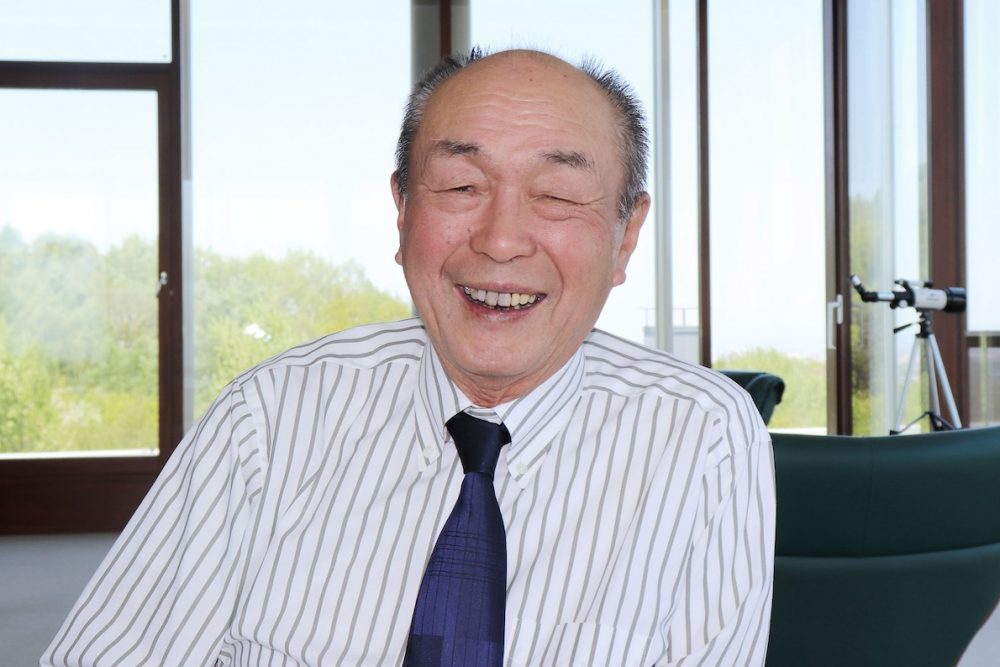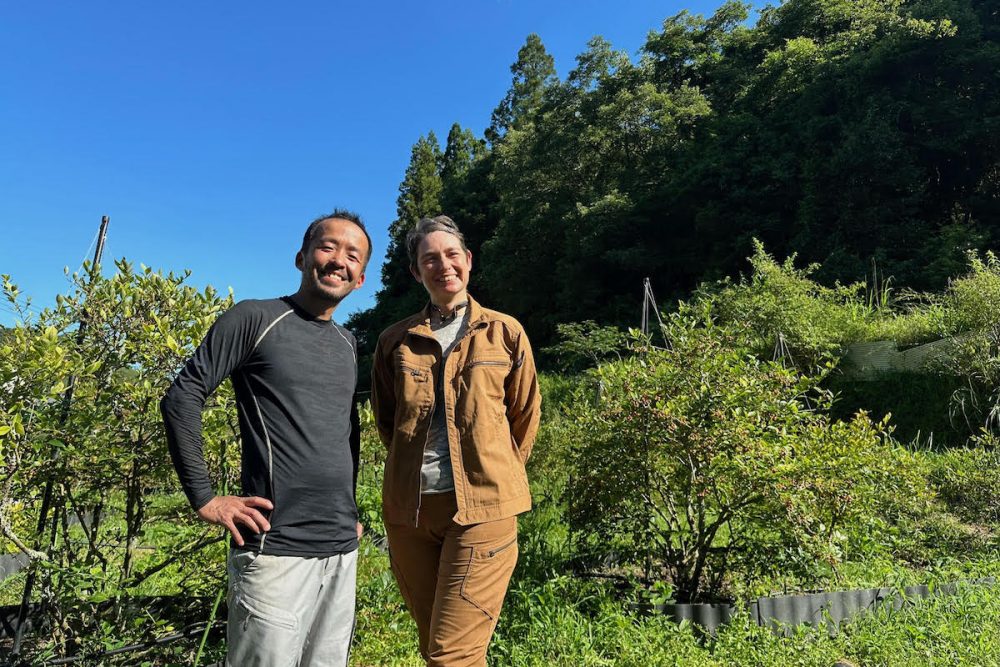Washoku: Can Japanese Cuisine Be Made Even Healthier for Future Generations?
10 years ago Washoku was registered as a UNESCO Intangible Cultural Heritage and has drawn attention globally as a healthy diet. But what exactly is Washoku?

このページを 日本語 で読む
On December 4, 2023, a symposium commemorated 10 years to the day since Washoku was registered with UNESCO as an intangible cultural heritage. Then in March 2024, an event was held in London, also to celebrate the 10th anniversary. It focused on dashi (Japanese soup stock), which forms the basis of Washoku cuisine. The events explored ways to ensure Washoku is passed on to future generations.
What's Changed after UNESCO Registration?
"Washoku's registration with UNESCO made a significant impact, which had major impacts socially as well."
So reflected Isao Kumakura, Director of the Miho Museum, who played a crucial role in the UNESCO registration. Kumakura spoke at the "Connecting Washoku to the Next Generation" meeting at the Imperial Hotel Tokyo.

Since the registration, leading figures have been selected as Persons of Cultural Merits for their contributions to Washoku. These include Yuzaburo Mogi, Honorary CEO of leading soy sauce producer Kikkoman, and Yoshihiro Murata, third-generation head chef and owner at Kikunoi, a long-established Japanese restaurant in Kyoto.
A fellow Person of Cultural Merits and former director of the National Museum of Ethnology, Naomichi Ishige, also published a paper on Japanese food culture.
"[UNESCO registration] has elevated the status of Washoku. Now traditional Japanese cuisine has been raised to the level of cultural practices like tea ceremony, flower arrangement, and calligraphy," Mr Kumakura emphasized. He noted, however, that "Washoku has yet to be made a national important intangible cultural property by Japan's national government." Mr Kumakura went on to suggest a new goal – the designation of Japanese chefs as living national treasures in the genre of food culture.
Concern for the survival of Washoku culture among prominent food-related figures in the Kansai region was the origin of the movement to register with UNESCO. The registration both elevated the status of Washoku within Japan, and led to wider recognition around the world.
So, What is Washoku?
UNESCO recognized the value of Japanese traditional cuisine. But what really is Washoku?
Two speakers at the symposium defined Washoku from a health perspective. First, Ichiro Tsuji, Professor Emeritus at Tohoku University School of Medicine described its core components.
Professor Tsuji categorized these into 7 areas.
- Foods: rice, soybeans, vegetables, fruits, seaweeds, and seafood
- Drinks: green tea
- Fermented foods: miso, soy sauce, natto, pickles, etc
- Nutritional balance: the one-soup-three-dishes (ichiju-sansai) makeup of a meal
- Seasonings: miso, soy sauce, vinegar, mirin, etc
- Preparation methods: bowls, dressing, boiling, steaming, grilling, frying, vinegar-based dishes, etc
- Culture: associations with the four seasons and calendar events
Next, Nobuya Inagaki, Professor Emeritus at Kyoto University Graduate School of Medicine added to Washoku's definition.
He pointed out that Japanese cuisine is characterized by its diversity. It uses a wide variety of both ingredients and cooking methods, as well as a generous number of side dishes served alongside a staple food.
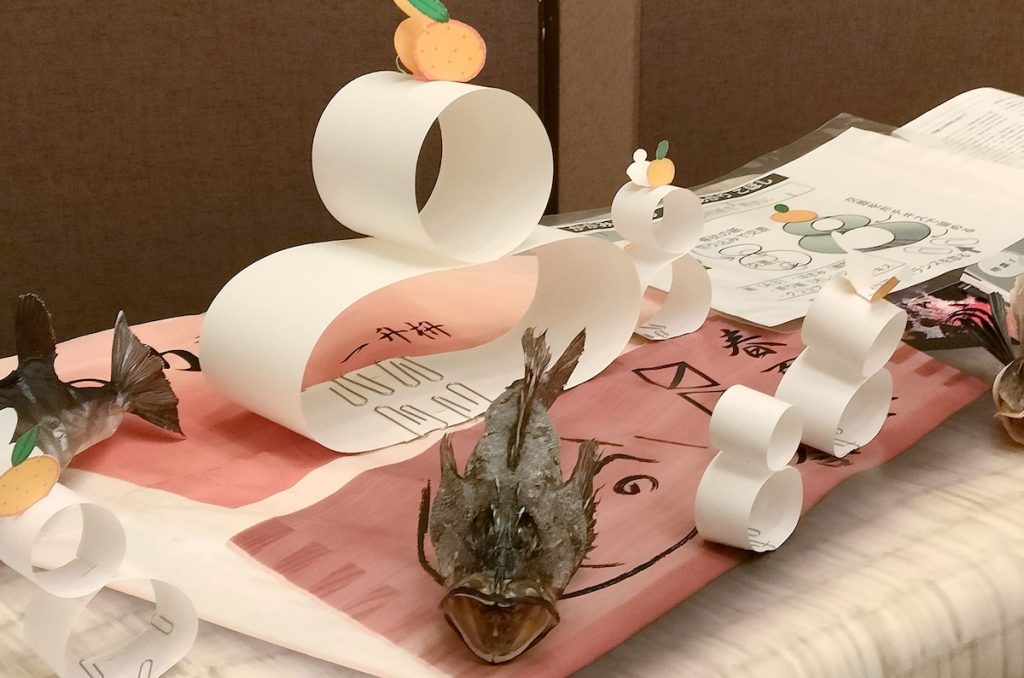
Notably, Professor Tsuji stressed the importance of the pattern of Washoku, rather than looking at individual foods. He used the typical traditional Japanese breakfast – made up of rice, miso soup, fish, seaweed, mushrooms, pickles, and green tea – as an example.
Washoku: Healthy or Not?
Washoku is renowned as a healthy diet by people all over the world.
A large cohort study involving Professor Tsuji shed some light on Washoku's health benefits. It targeted 55,000 residents of Osaki City in Miyagi Prefecture (roughly 52,000 respondents) and showed that mortality rates declined the higher the incidence of following a traditional Japanese diet. Likewise, the more people drank green tea the lower the risk of developing dementia. (Results showed a 25% reduction in dementia among those over 65 who drank 5 cups of green tea daily.)
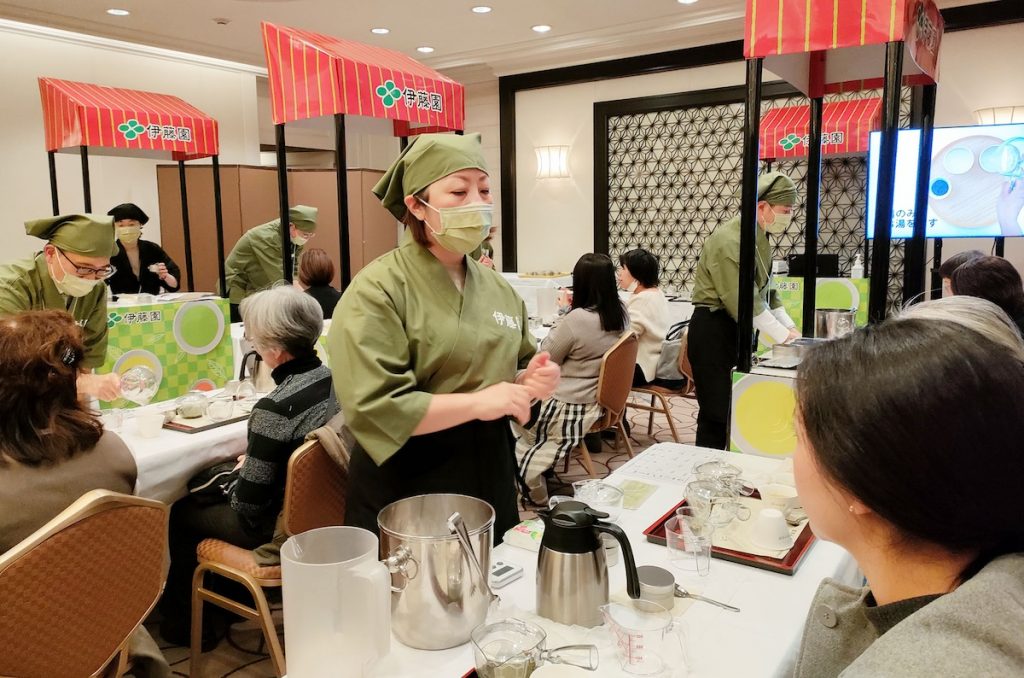
Green tea contains catechins, polyphenols that inhibit the buildup of beta-amyloid in the brain, a factor in Alzheimer's disease. It also contains a special kind of theanine, which is thought to have a positive effect on neurotransmitters.
Shizuoka Prefecture, known for tea production, ranks first in green tea consumption in Japan (about double the national average). It also has the 5th highest healthy life expectancy in the country. As such, green tea, an integral component of the Japanese diet, is considered to be health-promoting.
How Does Washoku Compare?
Another cuisine that is widely recognized as healthy is the Mediterranean diet.
Originating in countries like Greece and Italy, this diet is another traditional cuisine often defined by its pattern. Staples include olive oil, vegetables, fruits, nuts, legumes, seafood, and wine.
Mediterranean cuisine was registered as a UNESCO Intangible Cultural Heritage in 2010, a few years before Washoku. A great number of studies have shown its health benefits. In fact, numbers are more than 10 times those examining Washoku. The diet has been shown to reduce the risk of cardiovascular diseases like strokes and heart disease, cognitive decline, diabetes, and depression.
Japan takes pride in the traditional Japanese diet associated with a longer life expectancy. But there is a drawback. Professor Tsuji points out a high sodium intake as a nutritional challenge facing Japan.
Japan has the highest salt intake among developed countries, a factor affecting health conditions like hypertension. Consumption is more than double the World Health Organization (WHO) standard, and 60% of that salt comes from home cooking. This runs counter to the image of Japanese food as healthy.
For this reason, Japan has made reducing salt intake a top nutritional priority to extend healthy life expectancy.
Washoku and the Umami of Dashi
Professor Inagaki, who conducts scientific studies to evaluate the effects of traditional Japanese food on health, introduced the results of a 10,000-person cohort study in Nagahama City, Shiga Prefecture, as well as experiments on mice. He explained that while Japan has a lower incidence of obesity compared to the United States, Japanese people are more prone to diabetes.
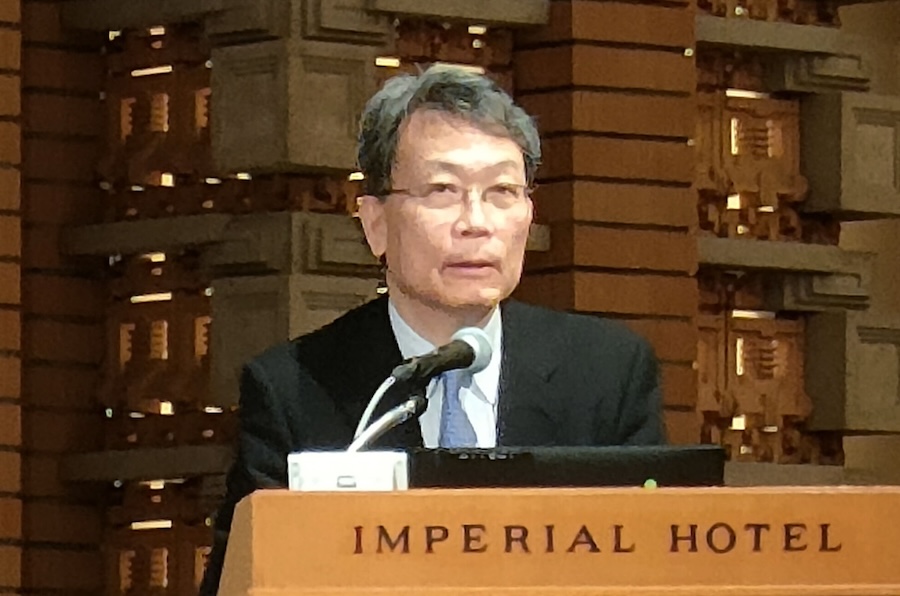
Japanese people secrete less insulin, which promotes the storage of fat. Fat that cannot be stored under the skin becomes visceral fat. According to Professor Inagaki, this makes them susceptible to the negative effects of excessive fat and sugar intake.
"Fat contains umami and tastes good, but it leads to elevated blood sugar, arteriosclerosis, and obesity," said Professor Inagaki. He suggested that adapting to a diet based on the umami in dashi, rather than fat, would be better for Japanese people.
Dashi and Salt: The Relationship
A panel discussion on the potential health benefits of Washoku addressed the merits of dashi.
One of the panelists was Toru Fushiki, Chairperson of the Washoku Association of Japan. He discussed a survey on the salt levels of ichiban dashi (first brew of dashi) from three high-end restaurants in Kyoto.
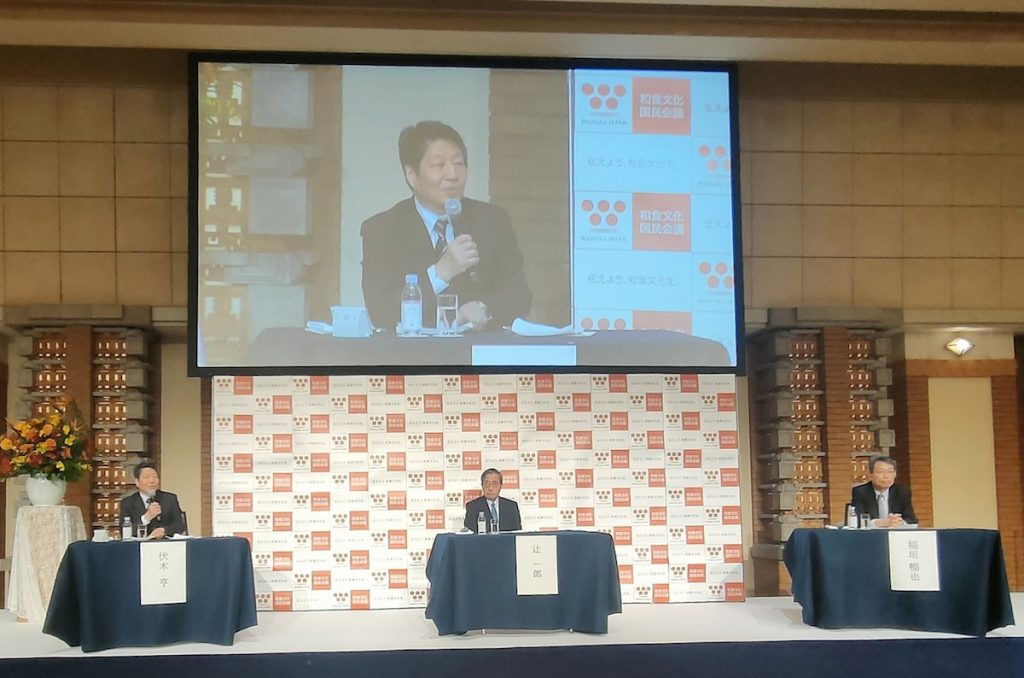
It found that salt concentrations for all three restaurants were around 0.64%, lower than typical levels that fall between 0.8 and 1%. He concluded that a carefully prepared dashi's rich aroma makes it sufficiently flavorful even with less salt.
Sodium-Free Washoku in London
In March 2024, a series of events celebrated the 10th anniversary of Washoku's UNESCO registration.
One such event, sponsored by the UK-based scientific journal Nature, focused on the salt-reducing effects of umami in Japanese cuisine. Daisuke Hayashi, owner-chef at the Roketsu Japanese kaiseki restaurant in London, gave a lecture entitled "The development and use of umami through Japanese food culture." He also presented sodium-free Washoku menu items.
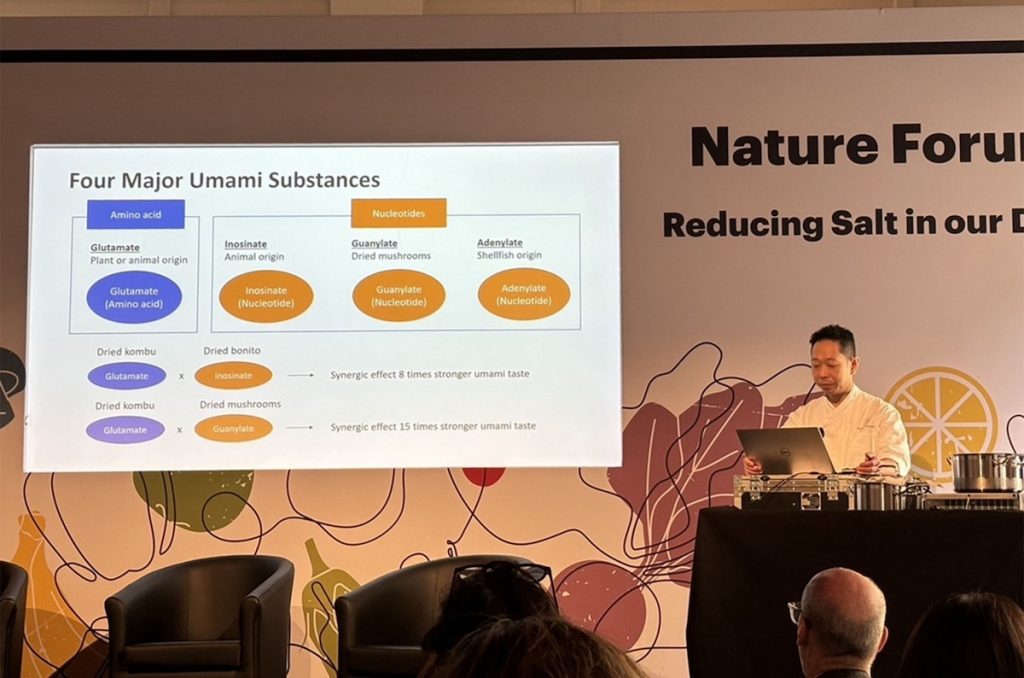
In an online interview from London, Mr Hayashi explained that he used a monopotassium glutamate umami seasoning, dried tomatoes, and dried morel mushrooms to make dashi.

He then used this dashi to simmer eggplant, mushrooms, pumpkin, and peas, served on a puree made from steamed cauliflower and dashi thickened with kudzu starch.
"Even without any butter or cream, the natural flavors of the ingredients themselves are sufficient to create delicious dishes," Mr Hayashi said.
Going Plant-Based
Traditional Japanese ichiban dashi usually uses kelp and bonito flakes. But for this event, Mr Hayashi refrained from using fish, taking on the challenge of crafting dashi from plant-based ingredients only.
"People find fat, carbohydrates, and umami to be the tastiest. So, we typically use oil, sugar, and salt to make our meals taste good. But the calories from oil and sugar and the sodium in salt cause problems. Meanwhile, umami can be used to design a great-tasting meal that is both low-calorie and low-sodium," he explained.
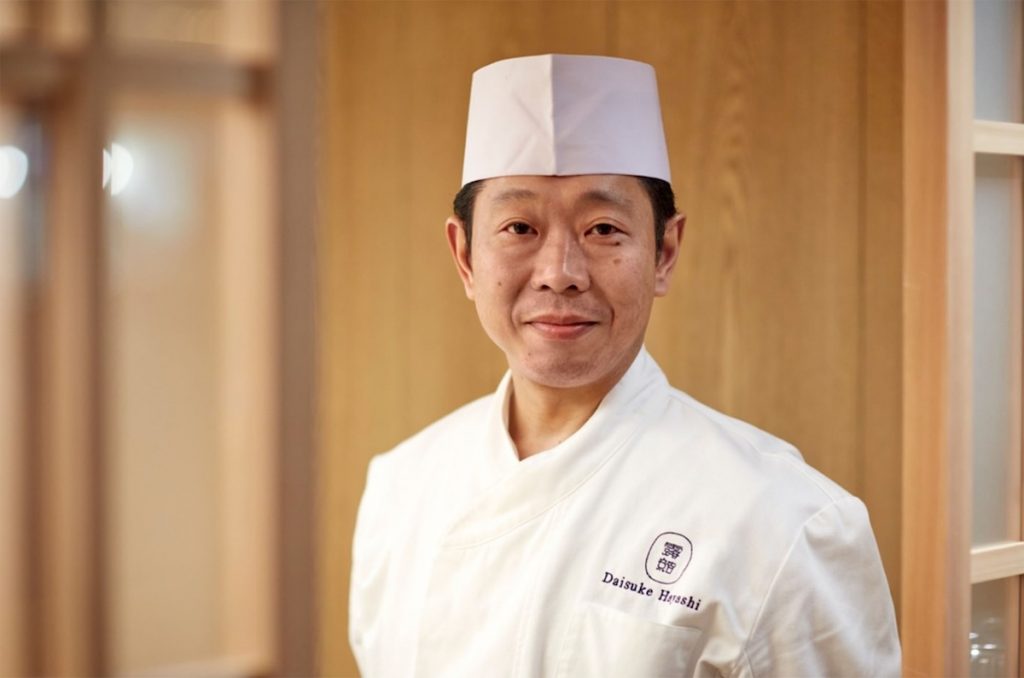
When it comes to minerals, plants have a high potassium content, allowing a shift toward plant-based dashi to reduce sodium intake. This also contributes to reducing the environmental impact of the livestock industry.
Ten years after Washoku was registered as a UNESCO Intangible Cultural Heritage, these studies and suggestions will contribute to preserving Washoku for the next generation and addressing the challenges it faces.
(This article was sponsored by Ajinomoto, a Logo Partner of Japan 2 Earth.)
このページを 日本語 で読む






